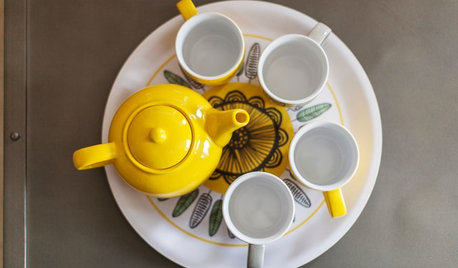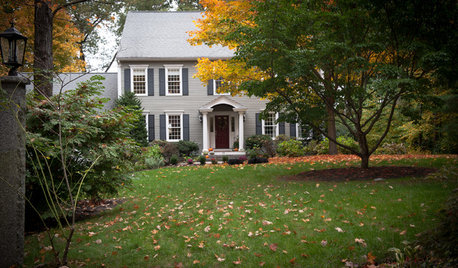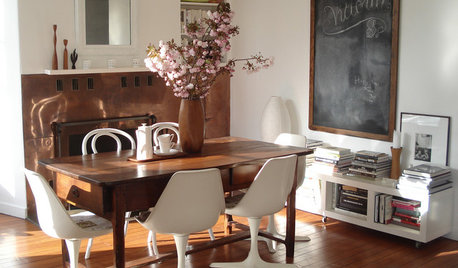So, I have always used bagged soils and just took cuttings or potted up when the plants went south on me, and never understood really what was going on. Then two years ago I bought a bay tree. I really wanted it to grow well and live in a container a long time since I can't really have one any other way. I had been reading here and there about gritty mix, some of the l-o-n-g threads about the hows and whys for a while, but never really made some because I had trouble finding the ingredients. ReptiBark at $9 a bag and forty miles away just wasn't in the cards for me. Well. I finally got it together to look out the window and see the woodpile and the pine bark piled around, and there was a chipper that came with our new house so to speak, and I put the two together with floor dry and chicken grit quartzite and I was in business.
So I have repotted some of my plants in the gritty mix, and so far with a lot of them it has been a winner. I don't think I have seen so many root systems before in my life. Most of the roots in the peat were between the soil and the pots. It is really hard for me to change how I water, as before I was watering very minimally, and at first I think I wasn't getting the bark wet enough in my mix, and some of the plants were really unhappy. I really need to have some good drip trays with this mix. My Homolomena was really sulking and wouldn't hold its leaves up for about two weeks. I did kind of trim it up top and bottom, and it wasn't a happy camper. Lately I have been trying watering it more and it is about the first plant that I have ever had that actually gets happier the more I water it. The Sanseveria is like in heaven, and the cacti. The bay tree was in a really bad sulk. It was really hot and I had it on the front porch and forgot it and it got sunburned and really drought stressed. I finally figured out about watering it, and it is finally growing. It just seems like if I water it so often I will kill it, which I would I guess if it was still in peat. It was in peat before and had roots wound around the sides of the pot about a thousand times, and I really didn't know what to do with it when I bare rooted it. This whole idea of bare rooting things to repot is so new to me. It was like the root system of a plant was its own little secret that if I messed with it I would kill it or something. Anyway, I ended up just cutting all the wound up roots off, and then I figured that I had better cut some of the top growth off to balance things out, so I cut a lot of that off too. Probably I cut more off than I needed to, but I really have no clue and am winging it, just trying stuff. Anyway, by now the sunburned leaves fell off mostly, and some of the leaf buds dried up and fell off, but it has three good growing points and I know it will at least survive.
The Hippeastrums are happy, and various regular sort of house plants like spiders. I still use the African violet mix I learned about on that forum for those. The only thing that is really unhappy is the Thanksgiving/Christmas cacti and Easter cacti. They have been dropping segments more than ever before, and I think a lot of them are headed for the compost. A lot of them are ones that I grew from seeds I hybridized myself, and there is a lot of variation in how sturdy they are. Watering more is not helping them like it did the bay tree and the Homolomena.
I have a side-by-side rosemary experiment going, and both the one I left in the peat and the one in gritty mix look okay so far.
The other thing that I've found is it is hard to root cuttings in a barky coarse mix. Well, it works okay for cacti and succulents, but I think for some things a finer mix is in order.
I kind of worried that if I changed to gritty mix it would be problematic where I live since our water is so full of dissolved limestone it is kind of a high pH out of the tap. I didn't need to add the limestone to the mix I figure, but I used to rely on the peat to kind of act as a buffer for the high pH water. Now I just add some vinegar to the water for that.
I still have more things to repot, but I thought I would tell what my results are so far. I will be curious to see what the long term results are. I appreciate the many posts on soils for containers, and the times when folks have shared their experiences. Thanks all.



















tapla (mid-Michigan, USDA z5b-6a)
greenman28 NorCal 7b/8a
Related Professionals
Saint Louis Park Landscape Architects & Landscape Designers · Saint Louis Park Landscape Architects & Landscape Designers · Canyon Lake Landscape Contractors · Oklahoma City Landscape Contractors · San Jose Window Contractors · Indian Creek Window Contractors · Phelan Window Contractors · Troy Window Contractors · Washington Window Contractors · Hutto Fence Contractors · Lake Forest Fence Contractors · Millbrae Fence Contractors · Saint Louis Park Fence Contractors · Voorhees Fence Contractors · West Jordan Fence ContractorsaseedisapromiseOriginal Author
aseedisapromiseOriginal Author
capoman
aseedisapromiseOriginal Author
tapla (mid-Michigan, USDA z5b-6a)
aseedisapromiseOriginal Author
aseedisapromiseOriginal Author